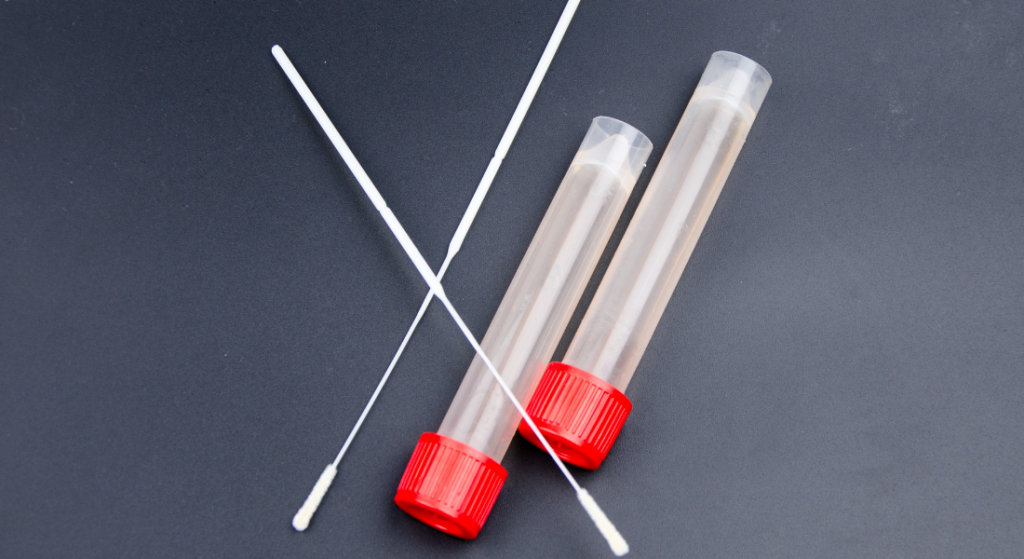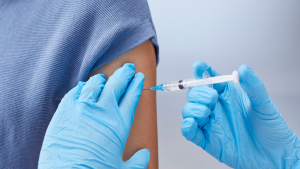
FDA Approves New Version of PrEP—Just Two Shots A Year
The FDA has approved lenacapavir as a form of pre-exposure prophylaxis (PrEP), offering a new option for HIV prevention requiring only two shots per year.

Visby recently announced promising results of a clinical trial that could bring lab-quality STI testing into our homes. The new, completely at-home PCR test for chlamydia, gonorrhea, and trichomaniasis could allow people to test themselves and get results and treatment within a matter of hours. If it gets FDA approval, this would join other FDA-approved tests at-home tests for syphilis and HIV.
Most STI tests are processed by a lab. Traditionally, you would go to a doctor’s office or clinic, a provider would collect a sample (often by swabbing your vagina or urethra), and that sample would be sent to a lab for analysis using special equipment.
Today, there are two additional options. Some providers offer “point-of-care” tests. This means that they collect the sample and run the test right there in the office (like the way a pediatrician runs a rapid strep test.) You may get the test results while you’re still in the office or your provider may call you with them in a few hours.
There are also many “at-home” test kits on the market. These kits allow you to skip the doctor’s office altogether by giving you the swabs and tubes you need to collect samples at home. You don’t get to skip the lab, however. You send your samples to a lab and get the test results back usually within a few days or a week. (The only exception to this is OraQuick, a rapid HIV test that uses a saliva sample and offers at-home results in 20 minutes. The at-home syphilis test, First To Know Syphilis Test, can give preliminary results at home in about 15 minutes, but a second test to confirm the results must be done at a provider’s office. )
Visby is hoping to change this with a truly at-home vaginal test for some of the most common bacterial STIs. The test kit includes a swab (so users can collect a vaginal sample), a tube with buffer solution, a syringe, the PCR test device itself, and a code for downloading a corresponding app. The app provides video instruction on how to collect a sample, place it in the buffer solution, and load it into the PCR device. The app then takes an image of the results from the device, generates a PDF, and offers access to telemedicine provider who can treat the STI(s) if needed.
The company recently presented results of its clinical trial at ID Week, an annual meeting of infectious disease specialists. The goal of the study was to see if the at-home test kit produced the same quality results as tests in other settings. It was less about the technology and more about whether users could follow the instructions, collect viable samples, and use the PCR device. The trial included 2,203 female users over 14 who performed the test in “simulated at-home settings.” Participants were not trained in advance and did not get any help from study staff. According to the company, the results were comparable to those conducted in a lab.
While most infectious disease experts who attended the presentation were impressed with the results, some had concerns. A few questioned how/whether these results would be properly reported to the Centers for Disease Control and Prevention (CDC) and local health departments. Others wondered whether users would inform their sexual partners of positive results. In addition, attendees were concerned about the price of the device (which is not yet determined) and the fact that it is for one-time-use only.
Still, most experts agree that more options for STI testing are important. Chlamydia, gonorrhea, and trichomaniasis are common STIs that have no symptoms. They can all be cured with antibiotics, but infections that are not detected and treated can lead to long term health consequences. The quicker an infection is caught and treated, the less likely it is to be spread to others.
The at-home PCR test has not yet been cleared or approved by the FDA.

The FDA has approved lenacapavir as a form of pre-exposure prophylaxis (PrEP), offering a new option for HIV prevention requiring only two shots per year.

On a recent episode of Love Island, a cast member sugested that we could blame our current STI epidemic on men who had sex with animals. She pointed to koalas with chlamydia as an example. There’s some truth here, but also a lot of misinformation.

A new report from the Centers for Disease Control (CDC) shows that we’re missing opportunities to prevent congenital syphilis and save lives.

Currently, condoms are the only widely available, proven method for reducing transmission of HIV and other sexually transmitted infections (STIs) during sex. Condoms work.

Anal sex may have once been thought of more taboo than other sexual behaviors, but today we know it’s a perfectly normal way to find sexual pleasure.

It’s time to celebrate the start of summer! June is filled with national observances to help you start the summer off right. We’re here to help make June the start of a #safesexysummer.

There’s potential good news in gonorrhea prevention as a series of studies suggests that certain meningococcal B (MenB) vaccines can reduce the risk of gonorrhea.

There is new guidance on pain management for IUD insertion and acknowledgement that providers often underestimate the pain patients feel during their procedures.
ASHA believes that all people have the right to the information and services that will help them to have optimum sexual health. We envision a time when stigma is no longer associated with sexual health and our nation is united in its belief that sexuality is a normal, healthy, and positive aspect of human life.
ABOUT
GET INVOLVED
ASHA WEBSITES
GET HELP
© 2025 American Sexual Health Association